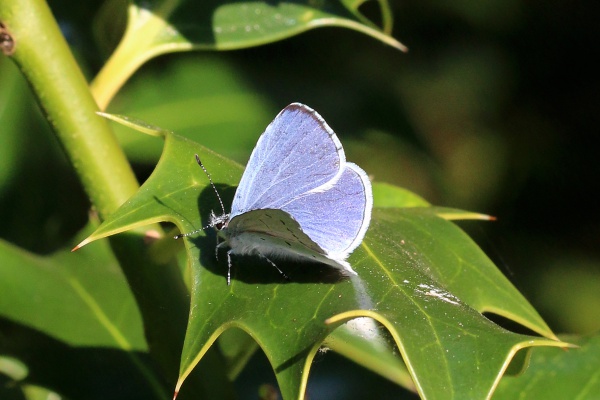Facts About Holly blue
The holly blue butterfly, part of the lycaenids or blues family, is found across Eurasia and North America. This delicate butterfly is easily recognizable by its pale silver-blue wings adorned with ivory dots. Males feature shimmering violet-blue wings with white margins, while females have darker wing borders with faint eye-like spots.
The life cycle of the holly blue begins with flat, whitish eggs. Upon hatching, the larvae can be either green or brown, marked with yellowish-white patterns. These caterpillars feed on a variety of plants, including ivy, holly (Ilex), spindle (Euonymus), and bramble (Rubus).
This butterfly is quite common in Europe and holds the distinction of being the national butterfly of Finland. It was first scientifically described by Carl Linnaeus in 1758 under the name Papilio argiolus. Over time, numerous subspecies have been identified, and it is known by different names in various regions, such as the hill hedge blue in India and the spring azure in North America.
Geographically, the holly blue is widespread, inhabiting regions in North America, Central America, Eurasia, and South Asia, stretching from Pakistan to India.

 Ireland
Ireland